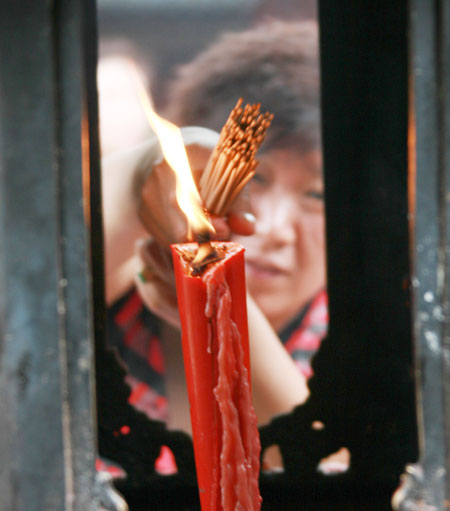Heights of fortune
Updated: 2013-06-06 01:28
By Zhang Zixuan (China Daily)
|
|||||||||||
 |
|
Mount Putuo has been a site for Buddhist pilgrimage for centuries. Photo provided to China Daily |
Mount Putuo, Zhejiang
Mount Putuo is one of China's "four Buddhist mountains" and one of Zhejiang province's 1,390 Zhoushan islands.
Its religious significance dates to the Qin Dynasty (221-206 BC). It became a Buddhist hub nourished by the flourishing Maritime Silk Road in the Tang Dynasty (AD 618-907). It gradually became a center for the development of the rites of the Bodhisattva Guanyin that drew influence from Southeast Asia and Japan.
By the late Qing Dynasty (1644-1911), it hosted three grand temples, 88 halls, 128 thatched huts and several thousand monks.
The mountain remains a place of pilgrimage.
Non-religious visitors scale its slopes to enjoy its "natural oxygen bar", swim and watch sunrises over the sea.
The range's Buddhist history has produced a largely vegetarian cuisine. Pilgrims dine in Putuo's temples, especially its three largest - Puji, Fayu and Huiji. Putuo Buddha tea is also a must-try.
The Seafood Garden houses 52 seafood restaurants. Many hostels also prepare seafood.
IF YOU GO
• During the Dragon Boat Festival, the mountain is open from 8 am to 5 pm.
• Putuo Airport has many flights to such cities as Beijing, Shanghai and Guangzhou.
• There's only one port in Mount Putuo. Ships sail to other coastal cities daily.
• The No 1 and No 2 bus lines connect all scenic spots. Buses depart every 10-15 minutes.
• Photography is prohibited inside the temples.
Related Stories
Dragon Boat Festival to memory Qu Yuan,a poet died in Miluo River, Hunan Province 2013-06-05 17:55
Dragon Boat Festival in Taiwan's Qu village 2013-06-04 15:11
Dragon boats race on Qinhuai River in Nanjing 2013-06-03 16:50
Dragon Boat Festival celebrations 2013-05-30 15:56
Chenshan Botanic Garden prepares for Dragon Boat Festival 2013-06-04 09:37
Today's Top News
EU imposes duties on solar products
Sino-Mexican relation 'relaunched'
Solar duties risk China-EU trade ties
Protectionism hurts EU exports to China
China joins fight against hacking
Police advise women to 'cover up'
Beijing to have more clean-energy taxis
China's water quality 'not optimistic'
Hot Topics
Lunar probe , China growth forecasts, Emission rules get tougher, China seen through 'colored lens', International board,
Editor's Picks

|

|

|

|

|

|





